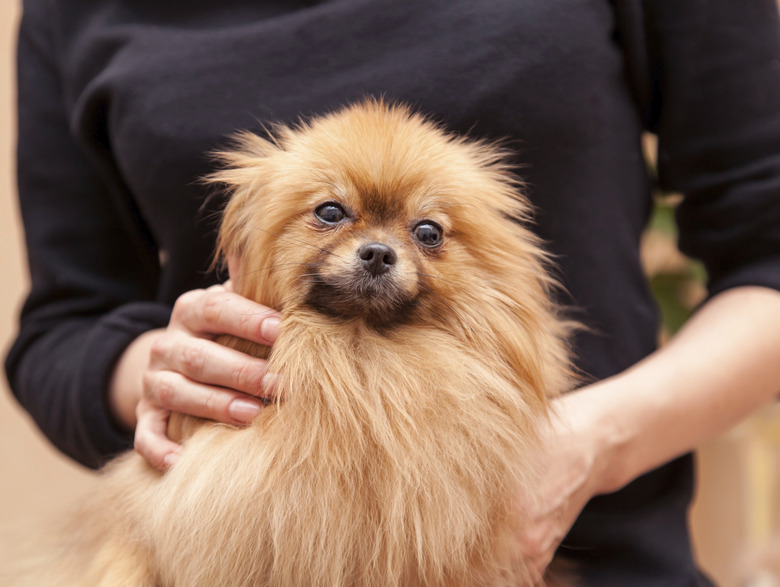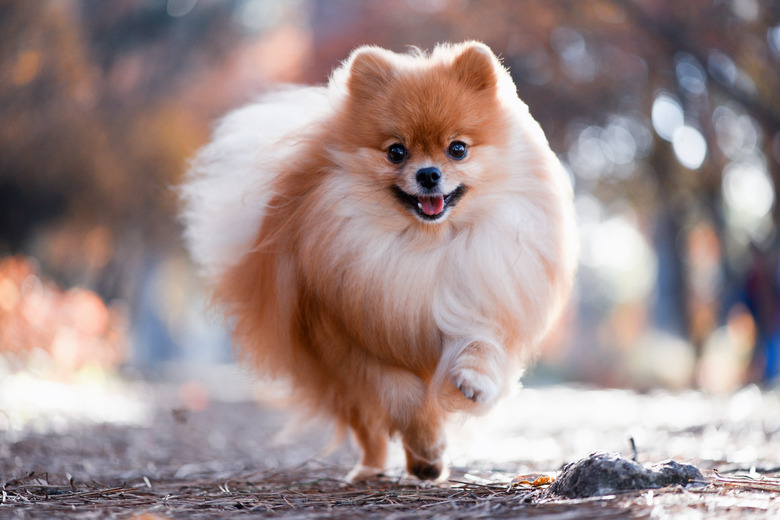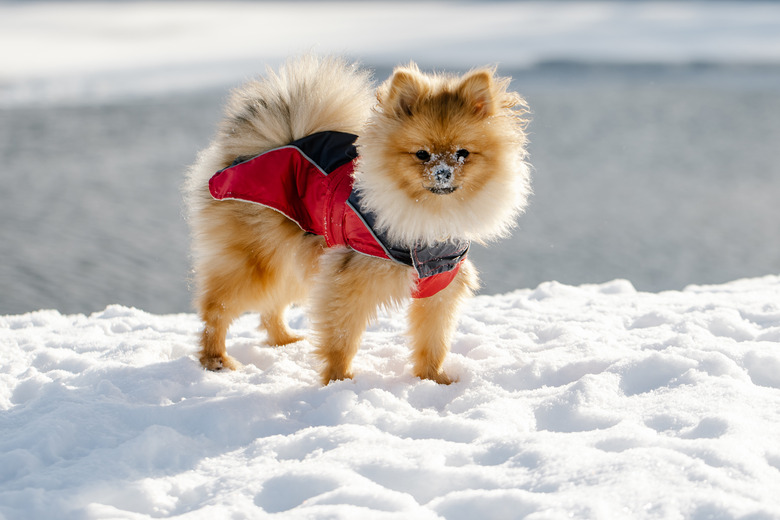Do Pomeranians Shed?
Pomeranians make good house pets for families and kids who understand that they are toy dogs, but not toys, and whose family members are not allergic to dog dander. Poms are best described as tiny dogs who think they are big dogs. In fact, Pomeranians are descended from Norse spitz-type sled dogs and, in some countries, are called Zwergspitz, which means "dwarf spitz" in German. Poms are perfect for carrying with you everywhere and they will remind you of that. Their double coat includes a dense, soft undercoat and tougher outercoat that sheds year-round and may undergo intense Pomeranian shed once or twice a year for about two weeks, especially as warmer weather approaches.
Small size, big stature
Small size, big stature
With their demeanor, boldness, high energy, and extroverted personality, Pomeranians will not be overlooked just because they are tiny; apparently they do not realize or do not care that they stand just 6 to 7 inches high at the withers (tops of the shoulder blades) and weigh in ideally at 3 to 7 pounds. They are named from their prominence in Pomerania, an area that is now part of northern Poland and Germany, where they may have begun to be bred smaller. Beloved by both royalty and commoners for their elegant bearing, foxy faces, luxurious double coats, and outgoing personalities, it was British Queen Victoria who was responsible for Poms being bred to become ever smaller, from 30-pound dogs to toy size, according to the AKC. But, while their size decreased immensely, they retained the big personalities Poms are known to display.
Handling Pomeranian shed and alopecia
Handling Pomeranian shed and alopecia
Pomeranians are known and adored for their fabulous double coats except, of course, when they shed. Most of the time, profuse shedding only occurs once or twice a year over a two-week period, when they lose their double coat. Owners can manage year-round shed simply by brushing them twice-weekly which, since they are so tiny, is not a massive task. Another time of shedding is when Pomeranian puppies lose their puppy coat, which usually lasts from 4 months to10 months of age.
Some Pomeranians develop alopecia, however, which is the loss of most or all of their hair. It can occur after Pomeranian puppies lose their puppy hair, or any time up to about 10 years of age. Veterinarians call this adult onset growth hormone deficiency, while breeders often refer to it as black skin disease because the skin may, indeed, change color. It is also referred to as hair cycle arrest or coat cycle arrest. In addition to hormone deficiency, alopecia can be caused by depression or by changes in eating/drinking habits. But alopecia can also be an indication of liver or kidney disease, so consult your vet if your Pomeranian suffers from abnormal hair loss.
Diet of Pomeranian puppies and older Poms
Diet of Pomeranian puppies and older Poms
The diet for Pomeranians should vary in the different stages of life, from recommended puppy food to adult and senior food. Take care not to overfeed any dog, but especially Poms because weight gain can happen so quickly in toy dogs. Overweight dogs can suffer from many illnesses and diseases, just as people do, including heart conditions, diabetes, and orthopedic issues such as luxating patella, where kneecaps shift out of place and back in routinely. If you want to feed your Pom human food, experts recommend doing so only up to 25 percent of a dog's diet, as a way to enhance nutrition. Pomeranians are very intelligent and easily trainable, so you might use some human food as training treats; just keep the treats as part of the dog's overall diet and calorie count.
Health issues in Pomeranians
Health issues in Pomeranians
Pomeranians are generally a quite hardy and healthy breed; however, they can have some problems to look for. In addition to alopecia and luxating patella, Poms can experience hypothyroidism, hypoglycemia, heart issues, epilepsy, eye diseases, hip dysplasia, Legg-Calve-Perthes Disease where the femur of the hind leg does not grow properly, and collapsing trachea, where the trachea narrows and breathing is difficult. One suggestion to prevent collapsing trachea is to use a leash with a harness instead of one that attaches to the collar, so the dog's throat is not involved when you pull on the leash. If you are working with breeders, the American Pomeranian Club recommends that you ask to see the results of any tests done on the dog's parents before they were bred.
Purchasing Pomeranian puppies or adopting older Poms
Purchasing Pomeranian puppies or adopting older Poms
Many people want to raise their dog from the puppy stage, and if so, you can find registered litters on the AKC website. By registering with AKC, breeders agree to follow the required breeding standards, so it is a safeguard against your puppy having major health issues. However, many Pomeranians can be adopted through over 450 rescue clubs across the U.S. Rescue dogs can come from different background situations: from an owner who died, a lost dog, or an abusive home. Any rescue dog will be grateful for your love.


